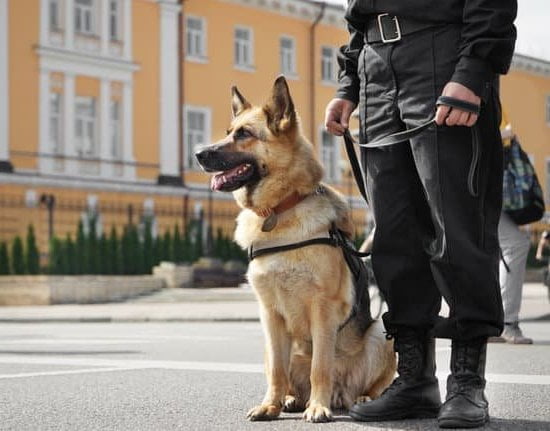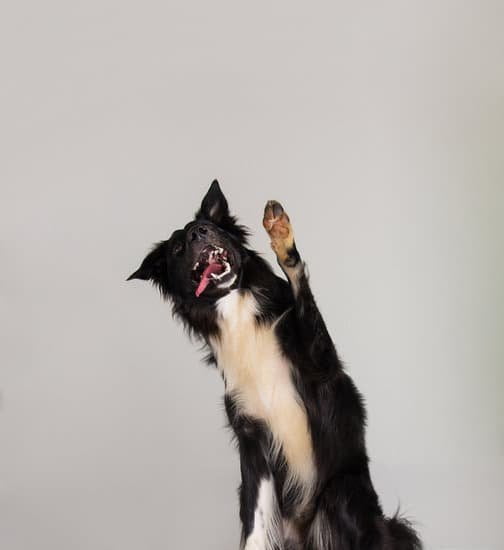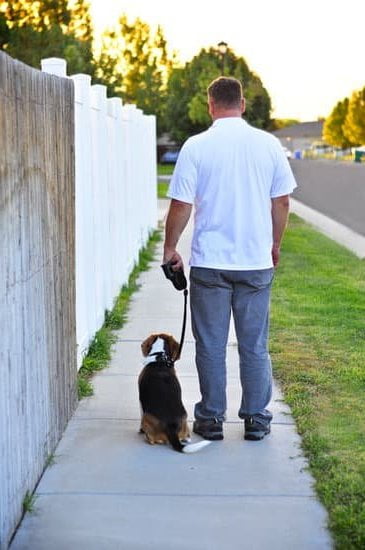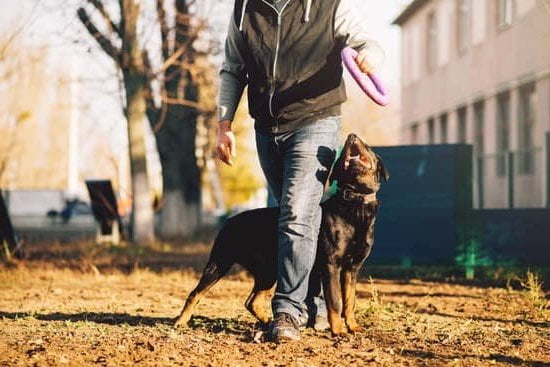Are you struggling with a dog exhibiting aggressive behavior? Look no further, as we dive into the world of dog aggression training. Aggression in dogs can be caused by various factors, and understanding them is crucial in addressing this issue effectively. It is important to recognize the different types and causes of dog aggression in order to find the right approach for training and behavior modification.
When it comes to dealing with dog aggression, training is key. Not only is it essential for the safety of your pet, but also for the well-being of others. Properly addressing aggressive behavior through training can prevent potential harm and create a harmonious environment for both your dog and those around them. In this section, we will explore why training is crucial in managing dog aggression and how it can make a significant difference in your pet’s behavior.
Finding the right trainer to assist with dog aggression training is of utmost importance. With numerous professionals offering their services, it can be challenging to select the best fit for your pet’s needs. We will provide valuable tips on how to choose the most suitable professional who can effectively address your dog’s aggressive tendencies through positive reinforcement techniques and behavioral modification strategies.
The Importance of Training
Addressing dog aggression through training is crucial for the safety of not only your pet but also others in your community. Aggressive behavior in dogs can pose serious risks to people, other animals, and even the dog itself. Understanding the importance of training to address this issue is essential for responsible pet ownership.
When left unchecked, dog aggression can lead to severe consequences such as attacks on other pets or individuals. By addressing aggression through proper training, you can prevent these potential dangers and create a safer environment for everyone involved. Additionally, it is important to recognize that aggressive behavior in a dog often stems from fear, anxiety, or a lack of socialization – all of which can be addressed through effective training.
Here are some key reasons why addressing dog aggression through training is crucial:
- Prevention of potential attacks
- Promotes safe interaction with other pets and people
- Creates a harmonious living environment
Seeking professional help and utilizing positive reinforcement techniques are important steps in addressing dog aggression. Ultimately, by investing time and effort into proper training, you can ensure the safety and well-being of your pet and those around you while also fostering a positive relationship between you and your dog.
Finding the Right Trainer
When dealing with dog aggression, finding the right trainer is crucial for the success of your pet’s training. There are several tips to keep in mind when searching for a professional to help with dog aggression training.
Educational Background and Experience
One of the most important considerations when selecting a dog aggression trainer is their educational background and experience. Look for trainers who have specific education and certifications in dog behavior and training. Additionally, inquire about their experience working with aggressive dogs and ask for references or case studies from previous clients.
Training Approach
It’s essential to find a trainer who utilizes positive reinforcement techniques rather than punitive or harsh methods. Positive reinforcement focuses on rewarding desirable behavior, which can be highly effective in addressing aggression in dogs. Avoid trainers who rely on dominance-based training or aversive methods as these can exacerbate aggressive tendencies in dogs.
Compatibility and Trust
When choosing a trainer for dog aggression training, consider your compatibility and trust with the professional. It’s important to find someone who understands your concerns and needs, communicates effectively, and fosters a trusting relationship with both you and your dog. Take the time to meet potential trainers in person before making a decision.
By following these tips, you can find the right trainer to assist with your dog’s aggression training. Remember that addressing aggression in dogs requires patience, consistency, and the expertise of a knowledgeable professional.
Positive Reinforcement Techniques
When it comes to addressing dog aggression, positive reinforcement techniques have proven to be effective and humane methods for modifying aggressive behavior in dogs. These training methods focus on rewarding desired behaviors rather than punishing unwanted ones, creating a more positive and productive learning environment for your pet. Here are some examples of positive reinforcement techniques that can be used in dog aggression training:
- Clicker Training: Using a clicker to mark the desired behavior and then rewarding the dog with a treat or praise. This method helps the dog understand exactly what they’re being rewarded for.
- Desensitization: Gradually exposing the dog to the trigger of their aggression at a low intensity, and rewarding them for remaining calm. Over time, the dog learns to associate the trigger with positive experiences.
- Counter-Conditioning: Pairing the trigger of aggression with something positive, such as treats or play, to change the dog’s emotional response to that trigger.
It’s important to note that while positive reinforcement techniques can be highly effective in addressing aggressive behavior, it’s crucial to also identify and address the underlying causes of the aggression. Whether it’s fear, anxiety, frustration, or a lack of socialization, understanding why a dog is exhibiting aggressive behavior is essential in developing an effective training plan.
In addition to using positive reinforcement techniques, seeking professional help from a qualified trainer experienced in dog aggression training is highly recommended. A skilled trainer can assess your dog’s behavior, create a tailored training plan, and provide guidance on implementing these techniques effectively.
By incorporating positive reinforcement methods into your dog’s training regimen and seeking professional assistance when needed, you can work towards addressing your pet’s aggressive tendencies while fostering a strong bond based on trust and respect.
Socialization
The Importance of Socialization
Socialization plays a crucial role in preventing and managing aggression in dogs. When a dog is well-socialized, it means they have been exposed to a wide variety of people, animals, environments, and experiences in a positive way. This helps them feel more comfortable and less threatened by new stimuli, reducing the likelihood of aggressive behavior.
By introducing puppies to different social situations early on, they are more likely to grow up to be confident and well-adjusted adult dogs. Without proper socialization, dogs may become fearful or anxious in unfamiliar situations, potentially leading to defensive or aggressive reactions.
Socialization Techniques
One effective way to socialize dogs is through controlled exposure to various stimuli. This can include taking your dog for walks in different environments, introducing them to friendly and vaccinated dogs, and allowing them to interact with different people of all ages and appearances. It’s important to ensure that these interactions are positive and not overwhelming for the dog.
Another key aspect of socialization is obedience training. Teaching your dog basic commands such as sit, stay, and come can help them feel more secure in different situations and provide you with better control over their behavior when encountering unfamiliar people or animals.
Managing Aggression Through Continued Socialization
Even if a dog has displayed aggressive behavior in the past, continuing their socialization is still essential. Gradually exposing them to new experiences can help desensitize them to triggers that may have previously caused aggression. However, it’s important to always prioritize safety when socializing an aggressive dog by using muzzles or harnesses as needed and seeking guidance from a professional trainer experienced in dog aggression training.
Behavioral Modification
When it comes to dealing with a dog’s aggressive behavior, behavioral modification techniques are crucial for reshaping their tendencies. These techniques focus on changing the way a dog thinks and feels about certain situations that trigger their aggression. One effective method is desensitization, which involves gradually exposing the dog to the stimulus that triggers their aggression in a controlled and safe manner. This process helps them learn to stay calm in situations that used to make them aggressive.
Counter-conditioning is another valuable technique used in dog aggression training. This involves changing the dog’s emotional response to the trigger by associating it with something positive. For example, if a dog shows aggression towards other dogs, counter-conditioning can involve giving treats or rewards every time they encounter another dog without displaying aggression. Over time, this creates a new, positive association and reduces their aggressive response.
Additionally, redirecting a dog’s behavior through positive reinforcement can be an effective technique for modifying aggression. By rewarding desired behaviors and redirecting their focus when they start to become aggressive, dogs can learn alternative ways of reacting in certain situations. These techniques should be implemented consistently and patiently, as behavioral modification takes time and dedication but can yield significant progress in reshaping a dog’s aggressive tendencies.
| Behavioral Modification Techniques | Benefits |
|---|---|
| Desensitization | Gradually exposes the dog to triggers in a controlled manner |
| Counter-conditioning | Changes the dog’s emotional response to triggers by associating them with something positive |
| Redirecting Behavior | Rewards desired behaviors and redirects focus when the dog starts becoming aggressive |
By using these behavioral modification techniques as part of a comprehensive dog aggression training program, owners and trainers can effectively address and reshape a dog’s aggressive tendencies while promoting their overall well-being and safety.
Safety Measures
When working on dog aggression training, safety should always be the top priority. It’s important to understand that aggressive behavior in dogs can pose a risk not only to other pets or people but also to the owner or trainer.
One important safety measure is to use proper equipment such as a sturdy leash and a muzzle if necessary. This not only protects others from potential harm but also provides a sense of security for the person handling the aggressive dog.
Another key safety measure when working on dog aggression training is to create a controlled environment. This means choosing a quiet and familiar space for training sessions, minimizing distractions, and carefully managing interactions with other animals or people. It’s also crucial to have a clear understanding of canine body language in order to anticipate and prevent potential aggressive outbursts.
Furthermore, safety measures should extend beyond the training sessions themselves. Owners and trainers should take proactive steps to ensure that their home environment is safe for an aggressive dog, including securing fences and gates, using warning signs if necessary, and closely supervising interactions with visitors. By following these safety measures, owners and trainers can protect themselves, their pet, and others while addressing dog aggression training.
| Safety Measures | Data |
|---|---|
| Use of Proper Equipment | A sturdy leash and muzzle provide security |
| Controlled Environment | Quiet space for training sessions, minimize distractions |
| Secure Home Environment | Securing fences/gates, using warning signs if necessary |
Case Studies
In conclusion, dog aggression training is a crucial aspect of ensuring the safety and well-being of both pets and their owners. By understanding the different types and causes of dog aggression, pet owners can take proactive steps to address and manage this behavior. It is important to seek out the right trainer who specializes in dog aggression training, as they can provide valuable guidance and support in addressing aggressive tendencies in dogs.
Positive reinforcement techniques have been proven to be effective and humane in addressing aggressive behavior in dogs. By using these methods, pet owners can help reshape their dog’s behavior in a positive way without resorting to harsh punishment or force. Socialization also plays a key role in preventing and managing aggression in dogs, as it exposes them to different experiences and helps build their confidence.
Behavioral modification strategies are essential for reshaping a dog’s aggressive tendencies, and pet owners should also implement safety measures to ensure the well-being of themselves and others while working on dog aggression training. Real-life case studies provide inspiring examples of successful dog aggression training programs and their outcomes, highlighting the effectiveness of proper training and dedication in addressing aggressive behavior in dogs.
With the right approach, patience, and professional guidance, dog aggression training can make a significant difference in improving the quality of life for both pets and their owners.
Frequently Asked Questions
Can Aggression Be Trained Out of a Dog?
Aggression in dogs can be managed and controlled through proper training and behavior modification. Professional trainers can help identify the triggers of aggression and work on desensitizing the dog to those triggers through positive reinforcement techniques.
How Do I Stop a Dog From Being Aggressive?
To stop a dog from being aggressive, it’s important to first identify the root cause of their aggression. Whether it’s fear-based, territorial, or possessive aggression, implementing positive reinforcement training, socialization, and ensuring their physical and mental needs are met can all contribute to reducing aggressive behavior.
How Do You Discipline an Aggressive Dog?
Disciplining an aggressive dog requires a different approach than disciplining other behavioral issues. It’s important to remain calm and assertive, avoid physical punishment, and instead focus on redirecting the aggressive behavior with commands like “sit” or “stay.” Consistency, patience, and seeking professional help are key in disciplining an aggressive dog effectively.

Welcome to the blog! I am a professional dog trainer and have been working with dogs for many years. In this blog, I will be discussing various topics related to dog training, including tips, tricks, and advice. I hope you find this information helpful and informative. Thanks for reading!





